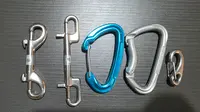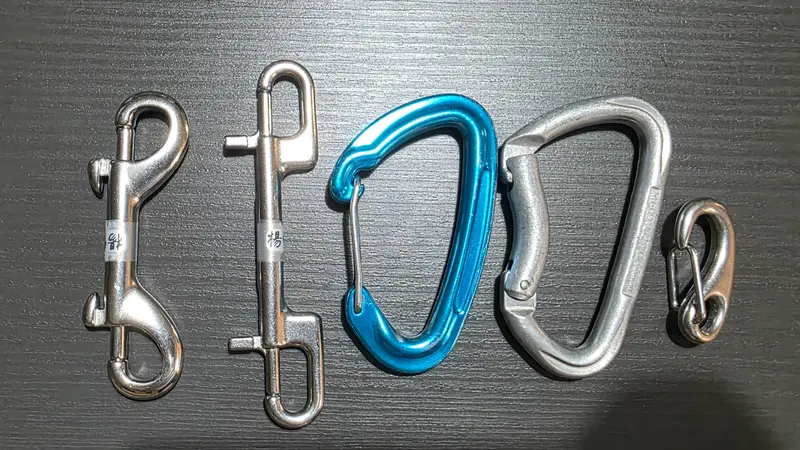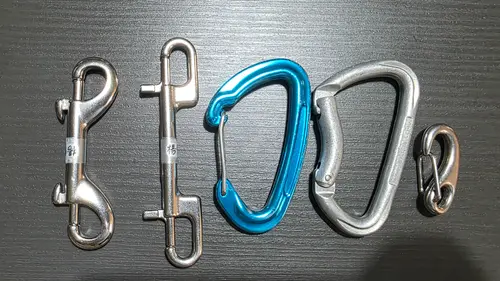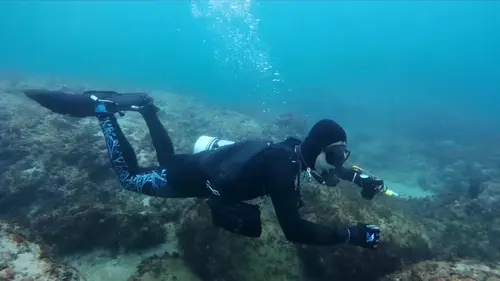
Choosing a Diving Clip
During diving, we often need to temporarily secure items like flashlights, fins, cameras, spools, SMBs, and rattles. Therefore, we often use carabiners, Velcro, and bungee cords.
Carabiners are made of metal and are considered the most reliable and durable method of securing items. However, each carabiner has its own design logic. Choosing the right carabiner can prevent accidental insertion or opening, thus preventing underwater damage. First, from right to left, they are named: egg hook, climbing snap hook, climbing snap hook (wire hook), diving double hook (technical diving), and diving double hook (general diving).
The egg hook is compact, making it difficult to determine the direction of its opening during diving. The opening wire is strong but the opening is small. Its primary use is when an item is attached and there's no need to remove it during diving.
Climbing snap hooks are designed to withstand at least 22 kN of load. To ensure consistent force and easy one-handed operation, they are generally pear-shaped. For engineering purposes, there are also D-shaped and O-shaped versions, each with locking or automatic locking options. With a wide opening and moderate wire elasticity, this carabiner is designed for quick access. However, due to this quick-access nature, the non-locking version requires caution when using it to prevent accidental insertion of the line. The locking version requires careful attention when using gloves to ensure easy access. Wire hooks are designed for lightweight design, but the opening often has a barb, which doesn't hinder insertion but can hinder removal.
The opening of a diving hook may appear small, but its large proportions are controlled by a pin, making it easy to unhook and significantly reducing the chance of accidental insertion or removal. Simply learn to properly hook it in by using your fingers as a guide. The technical diving version has a thinner carabiner, allowing for better rotation in smaller holes. The square locking head makes it easier to identify and apply force, even without a full hand grip, allowing it to be operated with just a finger. Both the standard and technical diving versions are available in different lengths and with single or double ends to suit different scenarios.
This is a very general description of the carabiner. I hope every diver can find the carabiner that suits them best.












